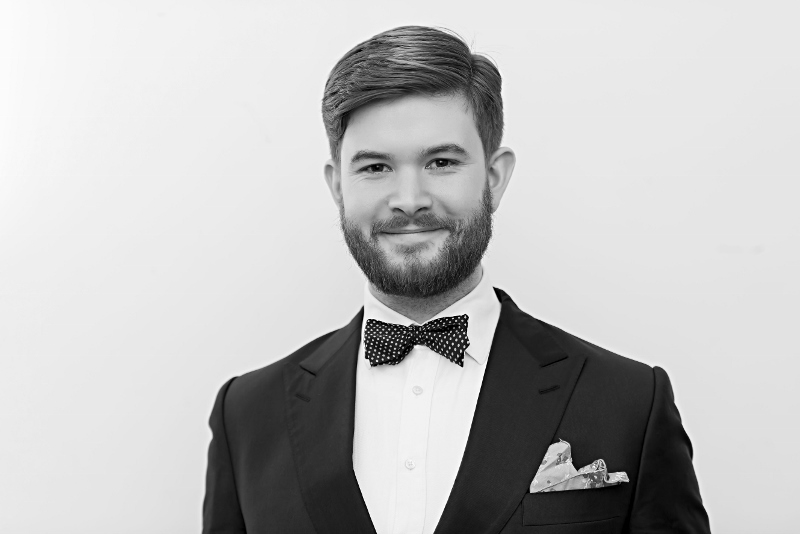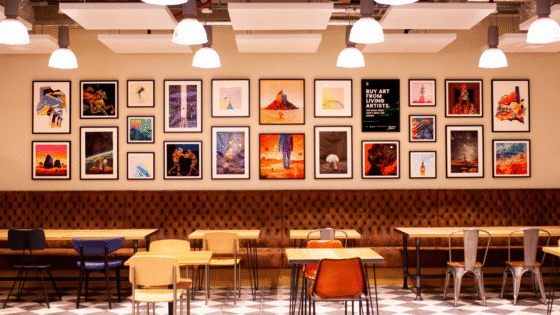As our ‘Spotlight On’ feature on Art and Photography becomes even more colourful, editor of Hotel Designs Hamish Kilburn caught up with the charming, and equally talented, visionary who is ARTIQ‘s co-founder and CEO Patrick McCrae. Together the pair discuss talent searching and how the art consultancy firm is leading art in hotels into uncharted waters…
Earlier this month, ARTIQ inspired me – as a young design enthusiast – to think outside the box when critiquing art in hotels around the world. The term ‘talent searching’ has never been so clear as it was at the final of the Graduate Art Prize. The room was full of ideas, some yet to be sketched. ARTIQ, which launched the awards in 2012, is led by the dynamic and charismatic Patrick McCrae. Considering his team’s work that hangs on the stunning walls of prestigious hotels such as Gleneagles and Hilton Imperial Dubrovnik, I had the pleasure of catching up with McCrae to find out more.
Hamish Kilburn: What do you look for when searching for new art talent?
Patrick McCrae: Innovation, creativity and sustainability. ARTIQ is interested in representing a diverse group of artists, but with the same level of ambition as our own and an exceptionally high level of quality. We work across many different media, from painting and sculpture to photography, prints and illustration, and we’re always on the lookout for artists making waves in their communities in the territories in which we’re active. We like efficient people and good communicators too! As we’re so hands-on with our artists, it’s really important to foster a close working relationship. Our clients see us as their conduit to the artworld, so it’s important too that we can reflect the calibre and standards of our clients in the artwork we put forward.
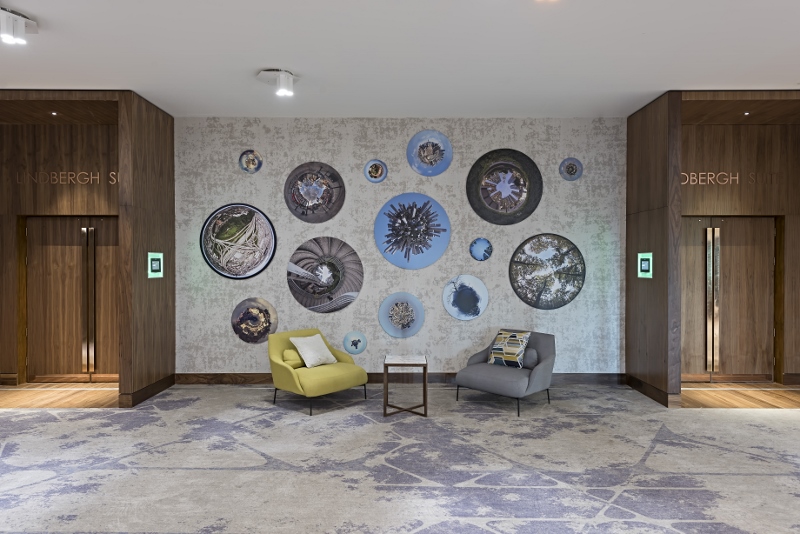
Image caption: ARTIQ were commissioned to curate an art collection for The Marriott Heathrow Conference, Banqueting & Event Space, redesigned by EPR Architects alongside works for the bedrooms, designed by Anita Rosato Interior Design.
HK: Which hotel has recently stopped you in your tracks because of its art – and can you describe it?
PM: In February, I stayed in a tiny boutique hotel on Waheike Island, New Zealand. I was there for the Auckland Arts Festival before touring around a bit and this was the last night in the country before coming home, so I really wanted to escape. The hotel was run by a husband-and-wife team and set atop a huge vineyard in an olive grove (it was all a bit extra). The plan was really to submerge in natural beauty before heading back to London. The place was incredible: a spacious suite with floor to ceiling windows opening completely on two sides to a terrace with sun chairs and a table and the most absurdly picturesque view ever. However, what really stuck me was the art collection, almost a lesson in modern art! Miro, Picasso, Kandinsky nestled amongst local artists inspired by the views. Every piece had a story and had been purchased over years by the owners. It was the aesthetic so many of our clients are inspired by – the idea of a collector’s collection, each piece relevant, each modern work by an artist known to the family, collected and transported by hand back to the hotel.
HK: British artists seem to be so attractive to hotel clients from around the world. But what is it that Britain has that other countries may lack?
PM: There are indeed many fantastic British artists and I think this stems from the strength of the UK’s art market, which allows a certain freedom and flexibility when it comes to creating and collaborating. At ARTIQ we adopt a fair pay policy and in turn have found that our artists are more open to working on commissions in a much less restrictive way. However, we do think it is extremely important that when working on an international project to support local artists and not just to promote a British-is-best mentality. For example, with Mode ApartHotel Arc de Triomphe, our team of art researchers sourced work by Parisian artists Christian Gastaldi and Matheiu Bernard to reflect the culture and innovation of the city and offer a powerful place-making tool for the hotelier, as well as a unique opportunity for guests to experience local arts and culture as soon as they reach their accommodation.
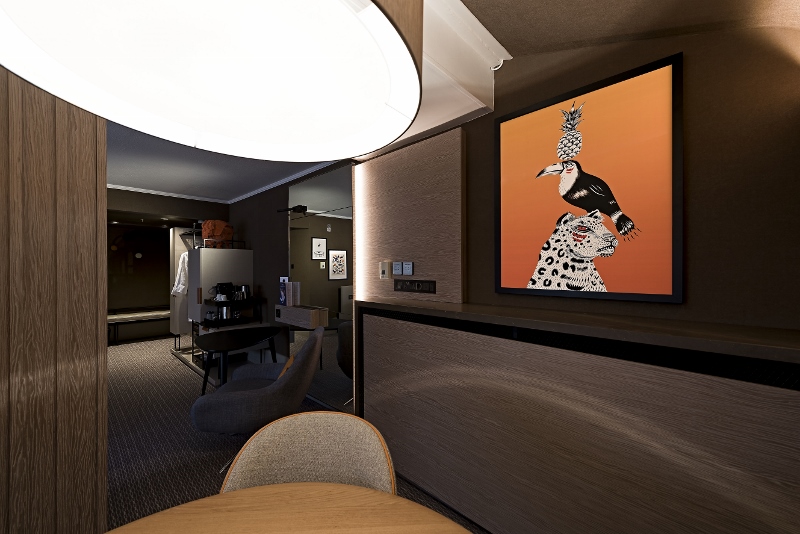
Image caption: The London Marriott Regents Park
ARTIQ worked closely with Anita Rosato Interior Design on the curation of a fun and location-specific art collection for London Marriott Hotel Regents Park
HK: What advice would you give to young artists aspire to branch out into the commercial market?
PM: Here are my seven top tips:
- Find your voice: in terms of subject and style, don’t be swayed by trends as these change and you’ll be left behind.
- Know your business: from your prices to your intellectual property – spend a bit of time working out your pricing, do a bit of research on industry practice, a-n, The Artists Information Company has a lot of great resources.
- Think about how can you help clients ‘get’ your work? Maybe it’s the story, maybe’s it’s how many hours you spend on a piece or maybe it’s the materials? Think about what makes your process a ‘practice’.
- Draw the line (early): Do you want to only sell originals? Do you want to do editions? Decide what you want now – it can always shift but makes you less likely to make uncomfortable compromises later in your career. The commercial art world can get hectic in terms of pace, and you want to lay a solid foundation early on.
- Support others and they’ll return the favour: Whether it’s a gallerist, curator, or fellow artist – opportunities can come from the unlikeliest places. Find peers and mentors who truly want the best for you and can be trusted to advise on prices/opportunities/where your work is going.
- Don’t be afraid to ask for what you want: if the client is really interested in the work, they’ll bite – it’s a negotiation, so play your part!
- Grow your network! Go to shows, go to openings, network, be nice, ask for business cards and follow-up.
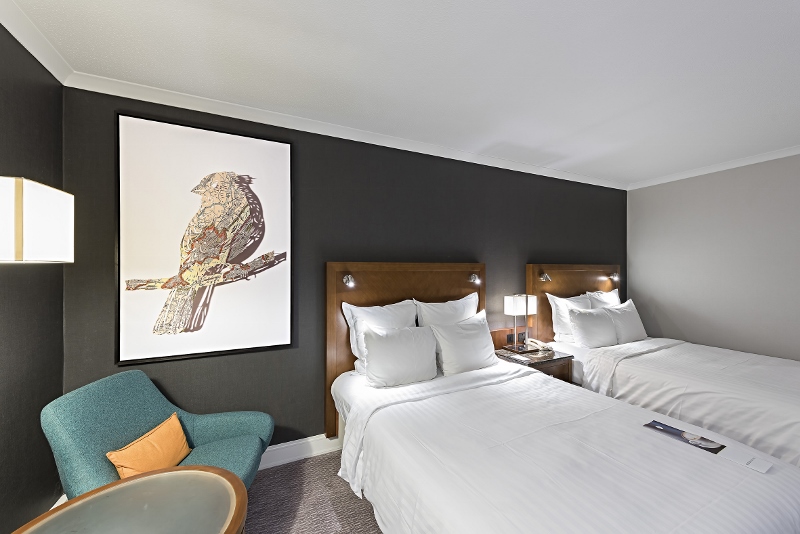
Image caption: The guestrooms at The London Marriott Regents Park were designed by Anita Rosato Interior Design, the art is all by Claire Brewster (ARTIQ)
HK: For designers working within tight budgets, how can they use art to help completely transform a hotel?
PM: When working within a tight budget, there are several ways to maximise the potential of your art. Firstly, consider renting a collection rather than buying. A rental collection can not only offer an affordable alternative to purchase, but in fact can attract more guests with a 3-6 monthly change that the marketing team can regularly talk about! In the same way, be open and clear about budget constraints from the get-go and your consultant can therefore tailor ideas that are specific to your project, rather than selling you something you cannot afford.
Think about the volume of the art you’re specifcying. Think about areas of high traffic or strong perspective. The ends of corridors, lift lobbies or walk-ways wherever everyone will travel to their rooms. With a focus on key traffic areas and a reduction in volume, art can be carefully curated to impress continually.
A salon hang is another very cost-effective idea, whereby relatively inexpensive art, when grouped together, can create a bespoke and high-visual impact, as the viewer’s eye tends to focus on the whole rather than the individual.
Finally, you should be working with a consultant for whom budget restraints can also lead to creative, even transformative, outcomes. For example, approaching the end of The Principal Edinburgh, our team had a tight budget for the public areas. Thinking outside of the box, ARTIQ used vintage frames for the new, commissioned pieces, which not only looked fantastic but brought a whole other dimension to the project.

